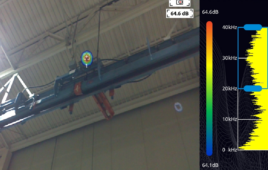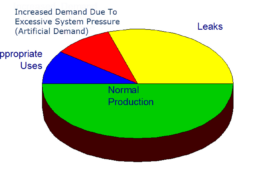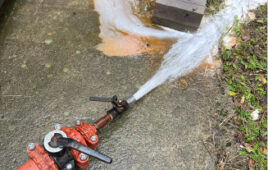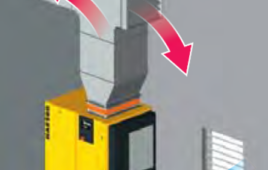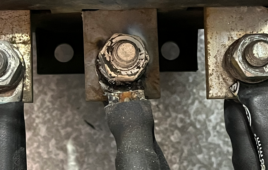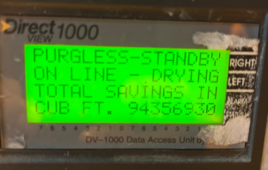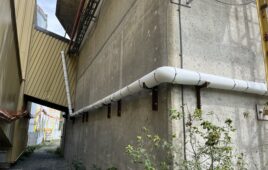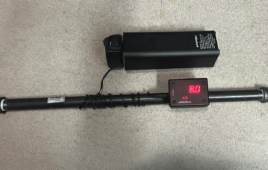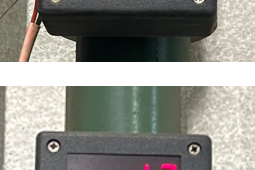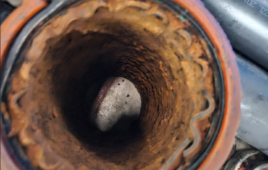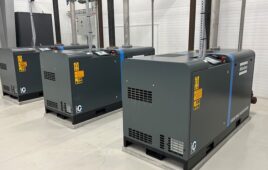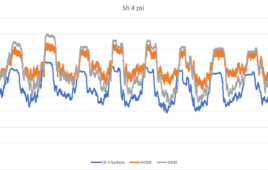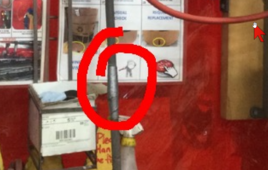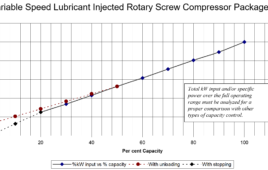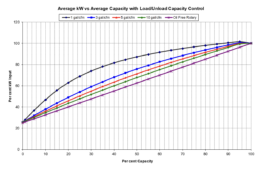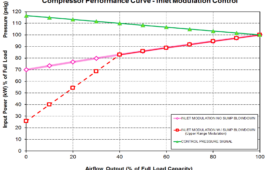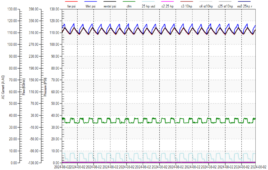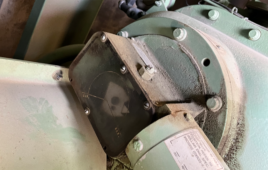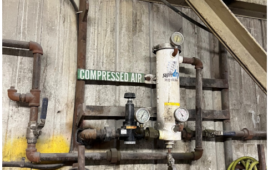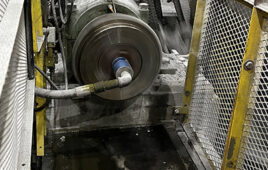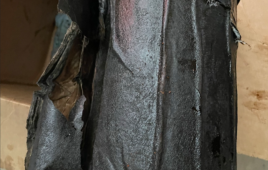The development of acoustic imagers has transformed the way compressed air leak audits are done, saving time for the user. Acoustic imagers are advanced tools used to detect gas leaks by capturing and visualizing high-frequency sounds that are typically inaudible to the human ear. When compressed air or gas escapes through cracks, holes, or loose […]
Compressed air fail: Inside the box thinking?
“Inside the box” thinking involves sticking to conventional methods and solutions that are tried and tested. For example: Routine maintenance: Regularly replacing filters and addressing leaks are standard practices to improve efficiency. Equipment upgrades: Replacing old compressors with newer, more energy-efficient models is a typical step. Basic monitoring: Installing pressure gauges and ensuring the system […]
Five big improvements for your compressed air system
By Ron Marshall Improving the efficiency of your air compressor system doesn’t always require a large investment. Small, cost-effective changes can lead to significant energy savings, reduced operational costs, and a longer system lifespan. Here are five practical and low-cost strategies to boost the efficiency of your air compressor. Fix leaks Air leaks are […]
Compressed air fail: Cold weather damage
Compressed air systems naturally generate condensate as moisture in the air condenses during compression and cooling. If this condensate is not properly managed, it can accumulate in the system, particularly in uninsulated outdoor pipes. During winter, when temperatures drop below freezing, this condensate can turn into ice, leading to significant operational and safety issues. Freezing […]
What temperature should a compressor room be during winter operation?
By Ron Marshall The short answer is “as cool as possible, but not below freezing.” The practical answer is uncomfortably cool, in the range of 50° to 60° F. Keeping the temperature low reduces the amount of condensed moisture in the discharge air and makes things easier for the air dryer. Compressors generate significant heat […]
Compressed air fail: Extra audit benefits
A compressed air auditor was performing his work at a large mining operation. He and the site electrician were opening up the various machine electrical panels to enable power factor testing. Within seconds of opening one compressor panel, the electrician jumped back with fright and informed the auditor he was going to be a while. […]
Compressed air fail: Desiccant dryers
When working with desiccant-style compressed air dryers, there are several factors to consider, to ensure optimal performance and efficiency. Desiccant dryers rely on two towers filled with desiccant material that alternately dry the air and regenerate, to maintain continuous operation. The regenerative purge is essential to removing the moisture collected by the desiccant, but it […]
Compressed air fail: Winter operation
Preparing an industrial compressed air system for cold winter conditions is essential to ensure reliable operation, prevent equipment failures, and avoid costly downtime. Cold weather introduces unique challenges, such as moisture buildup, freezing, and increased system stress — all of which must be addressed to keep the system running efficiently. Proactive preparation can safeguard your […]
Compressed air fail: Portable flow meter
When performing leakage detection on your compressed air system with your ultrasonic leak detector (if you don’t have one, good grief, run out and get one!), you will run across various leaks in piping and equipment. Many of these are small, so roughly less than $100 value per year. But quite often, you will find […]
Compressed air fail: Waste measured by flow meter
Do you know how much air your compressed air system is consuming? How about the level of waste during non-production? If you don’t, it may be time to purchase a flowmeter to find out the answers to these questions. Recently during a leak assessment, a compressed air auditor was surprised to see 46 cfm flowing […]
Compressed air fail: Pipe contamination
The typical piping installed in industrial plants and shops is made of steel, and as a result may be subject to rusting and contamination. Fig. 1 and 2 show what was found at a heavy industrial plant with the air compressors taking in polluted air. Rusting and contamination in compressed air system piping can lead […]
Norwegian fisheries rely on liquid ring vacuum pumps for packaging
Norway has a long tradition of catching and processing fish. The country ranks second in the world for exports behind China. To ensure the high quality of their freshly caught products, Norwegians pay particular attention to an unbroken cold chain. One company that contributes to a high level of food safety is Atlantic Styro. Based […]
Compressed air fail: Pressure increase
Normally when measuring the pressure gradient of a compressed air system in an industrial site, the pressure at the compressor discharge is the highest of all locations. Once the compressed air travels through piping, filters, air dryers, and other components — each causing restriction to flow — the pressure at the far end of the […]
ELGi introduces next-generation, highly efficient EG series air compressors
ELGi North America has upgraded its EG series portfolio with the introduction of the EG Super Premium (EG SP) 90-110 range of oil-lubricated screw air compressors and the EG PM 11-45kW Permanent Magnet Synchronous Motor (PMSM) compressor. Engineered to meet the evolving demands of industries worldwide, the new units maximize energy savings and reduce environmental […]
Compressed air fail: Duct tape leak repair
I found a leak, it’s hissing loud, Compressed air whistling, oh so proud. I grabbed some duct tape, rolled it tight, Thinking I’d fix this leak tonight. But oh, that tape — it flaps and flails, Like it’s on a ship with stormy sails. The air just laughed, a mocking squeak, “You can’t fix me, […]
Compressed air fail: Variable speed
In this blog post, we will discuss the fifth of five industrial compressor capacity control modes. A very efficient method of controlling a compressor at part load using variable speed mode. With this type of compressor, an electronic drive is fitted to a specially designed compressor with air end components matched to the intended speed […]
Compressed air fail: Load/unload
In this blog post, we will discuss the third of five industrial compressor capacity control modes. A moderately efficient method of controlling a compressor at part load uses load/unload mode with adequately sized storage receiver capacity. With this mode, a pressure switch, or electronic control, is used to provide load and unload signals to the […]
Compressed air fail: Modulating mode
In this blog post, we will discuss the second of five industrial compressor capacity control modes. The least efficient method of controlling a compressor at part load is using modulating mode by way of pneumatically controlled inlet valve control. With this mode, a pneumatic system detects the compressor discharge pressure and compares it to a […]
Compressed air fail: Start/stop mode
In this blog post, we will discuss the first of five industrial compressor capacity control modes. The simplest method of controlling a compressor is Start/Stop mode using pressure switch control. This control simply turns on the compressor to run at full load when the pressure hits a lower pressure level — and turns off the […]
Compressed air fail: Variable displacement
There are five different capacity control modes available for use with North American-built large industrial air compressors. It pays to know how each mode works, especially if you operate or service air compressors or happen to have your compressors operating in one of the least efficient modes. The accompanying photograph shows just one design that […]
Compressed air fail: Air-oil separator failure
A compressed air auditor regularly flow-tested the compressors under his study. This generally would be done if the air compressor was drawing low amps — a telltale sign that the unit is producing low flow output — or if the compressor has excessive hours. Often times, internal wear due to age will reduce output […]
Why use point-of-use dryers with compressed air systems?
It is common to see the air in a complete plant dried by a desiccant dryer only to service one small end-use that is subject to freezing temperatures. The purge from a large desiccant dryer is much more costly than that of a small point-of-use dryer, which can be placed on the outdoor feed. The […]
Compressed air fail: No log
A compressed air auditor was excited to see logbooks for each of the compressors at a large mineral processing facility. Each book was protected from the environment by a really nice orange plastic case. The auditor was interested to see the compressor history and opened the book, only to discover it was blank — no […]
Compressed air fail: Clutch play
A compressed air auditor recently performed an energy audit at a mineral processing facility. Plant personnel were constantly complaining about production outages due to low pressure. The problem was that when the pressure dips down below 80 psi, the drive clutches on the large ball mills — that grind the processed down minerals to powder […]
Compressed air fail: The bag method
Did you know that garbage bags have a use in the compressed air industry? The use of garbage bags to determine compressed air leakage, is described in the U.S. Department of Energy’s (USDOE) MEASUR tool and is a straightforward and cost-effective method for roughly estimating air leaks in a compressed air system. This technique is […]
